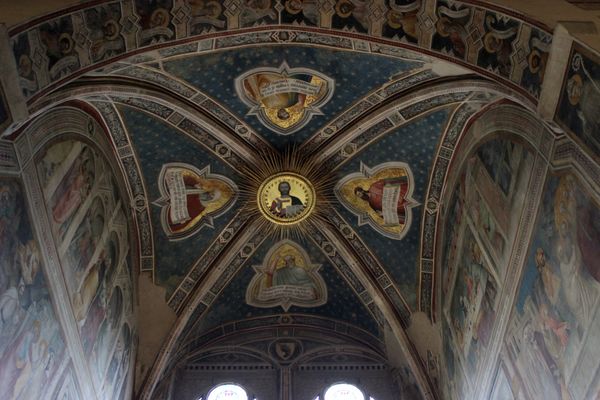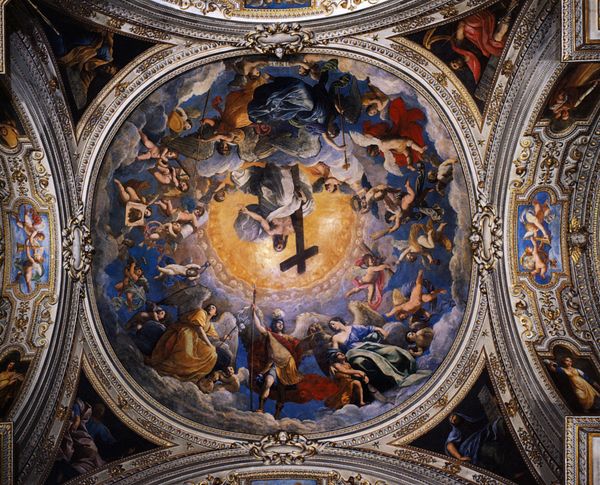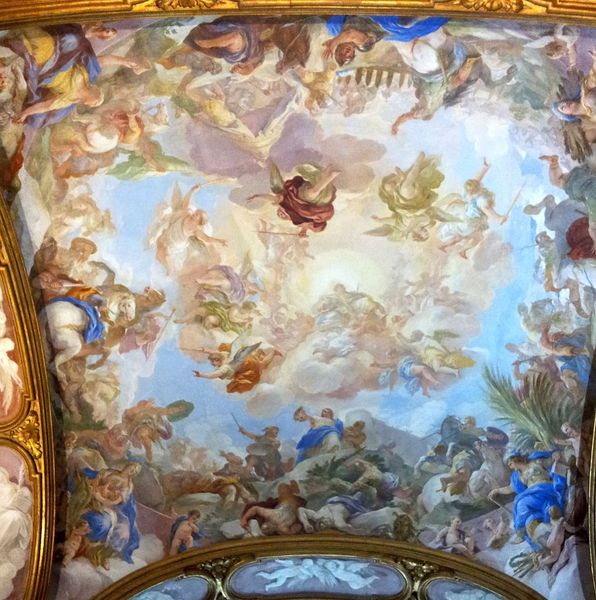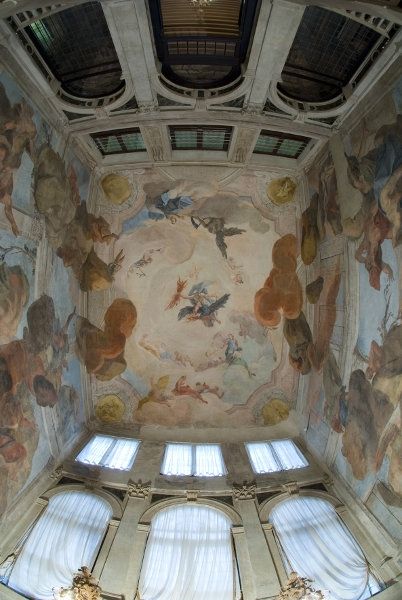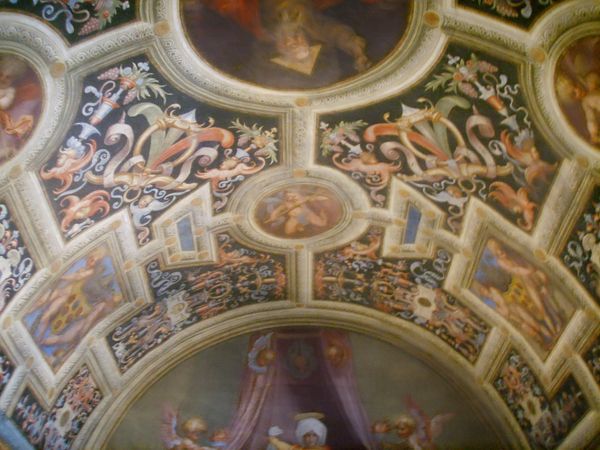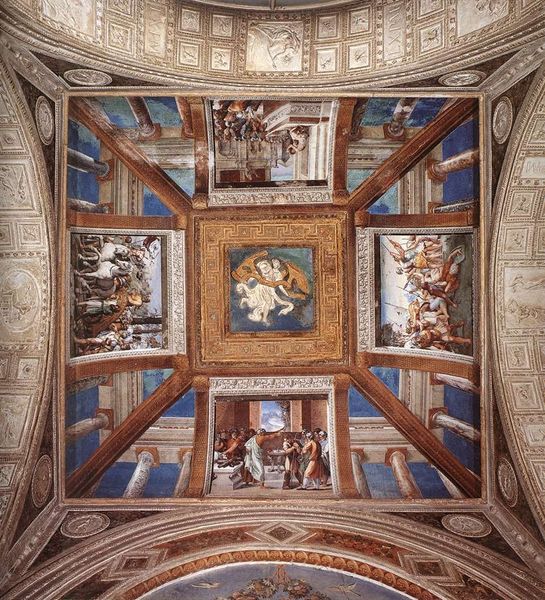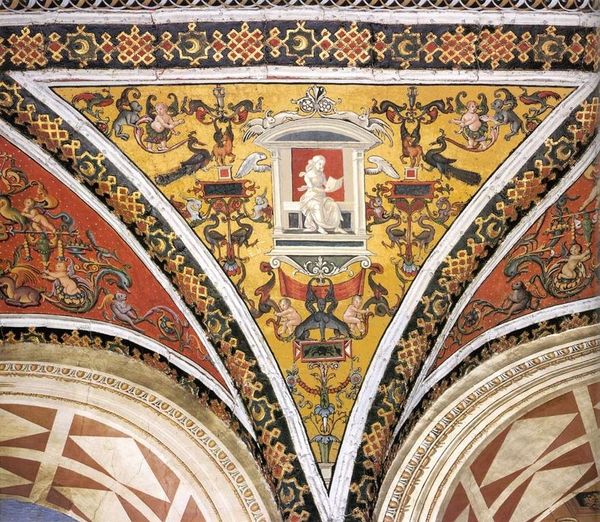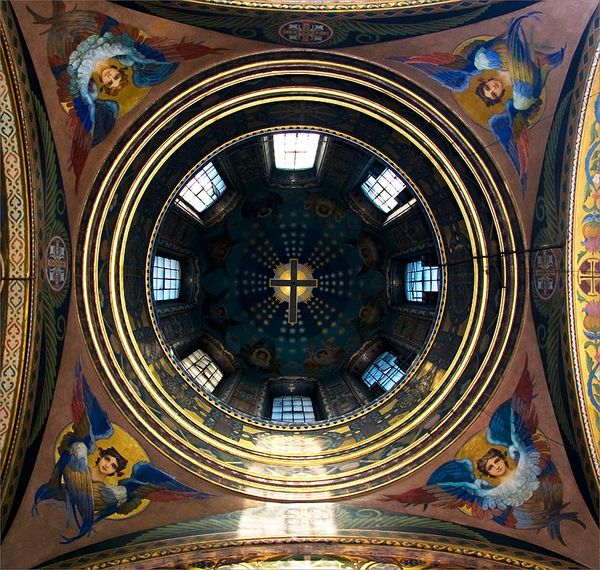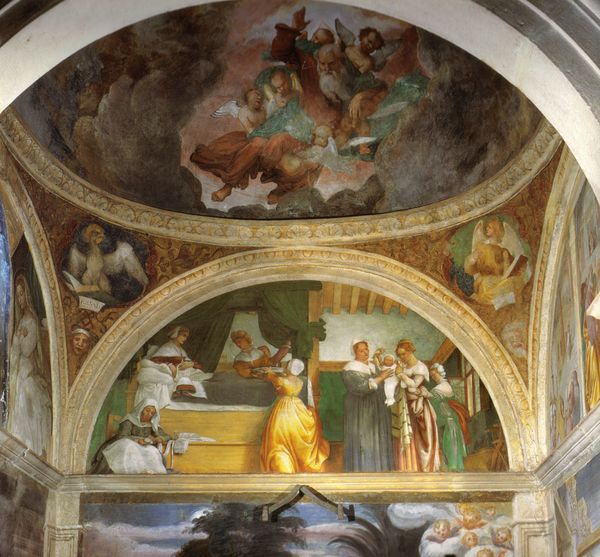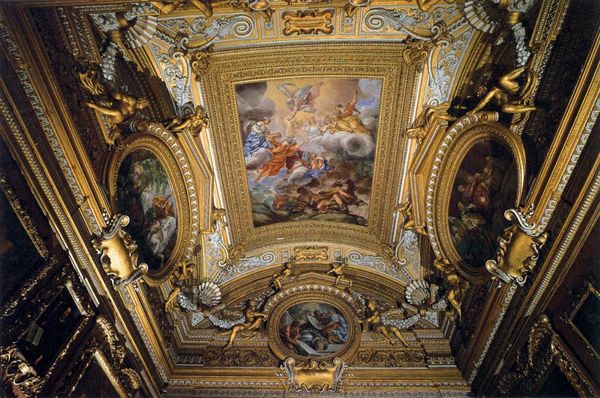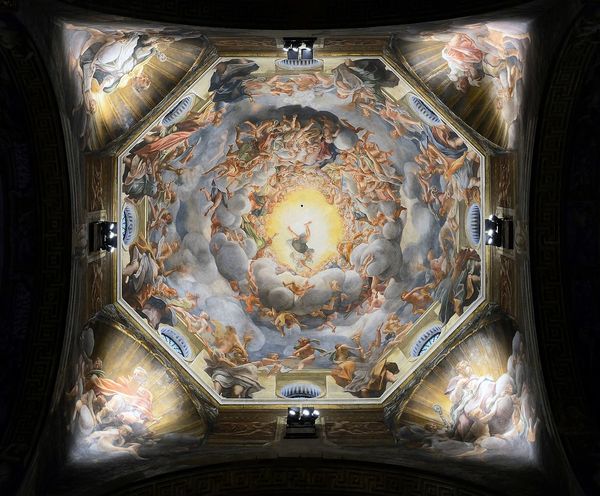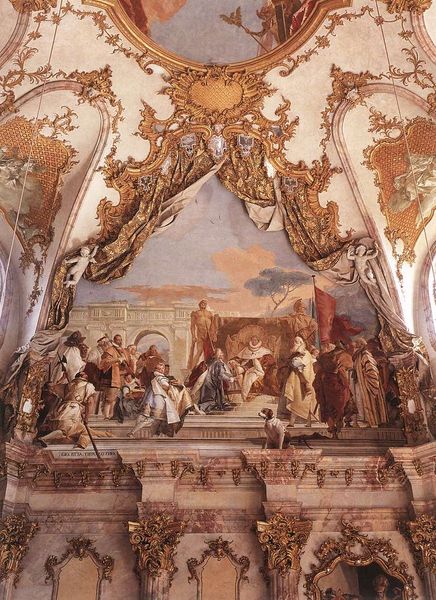
#
natural stone pattern
#
structure
#
stone
#
sculpture
#
historic architecture
#
traditional architecture
#
unrealistic statue
#
architecture
#
historical building
#
statue
Copyright: Public domain
Editor: So, this is "Stories of St. Jerome," painted in 1577 by Alessandro Allori, and it’s located in Santa Maria Novella in Florence. It's part of the ceiling decoration, and I am struck by the way the narratives are framed within these geometric shapes. What exactly are we looking at from a materialist point of view? Curator: We’re examining not just images, but a whole process of artistic production intrinsically linked to patronage and workshop practices. Look at the ceiling—fresco work requires an understanding of plaster, pigment mixing, and the logistics of scaffolding. How did the accessibility of materials like lapis lazuli, used for the blues, influence the overall palette and composition? Editor: That’s a good point! I hadn’t really thought about the availability and cost of the materials. Would the workshop assistants have been involved in preparing the plaster? Curator: Undoubtedly. The division of labor within Allori's workshop would dictate the hierarchy of tasks. Who prepared the giornata, the amount of plaster painted in one day? Whose hand was responsible for the more prestigious figural details versus the decorative elements? Editor: So, you’re suggesting that what we see isn’t just Allori's vision alone, but a reflection of the entire system of artistic production at the time? Curator: Precisely. The 'Stories of St. Jerome' becomes less about individual genius and more about a complex material and social endeavor, with the cost of the materials, and how the commission was achieved. How does this shift your perception of the work? Editor: It completely changes it! I thought it was mostly about Allori and his style. I now understand how a study of labor and materiality deepens our appreciation and sheds light on art history. Thanks for helping me better consider these important things! Curator: My pleasure, indeed, let’s analyze production not the divine act.
Comments
No comments
Be the first to comment and join the conversation on the ultimate creative platform.
